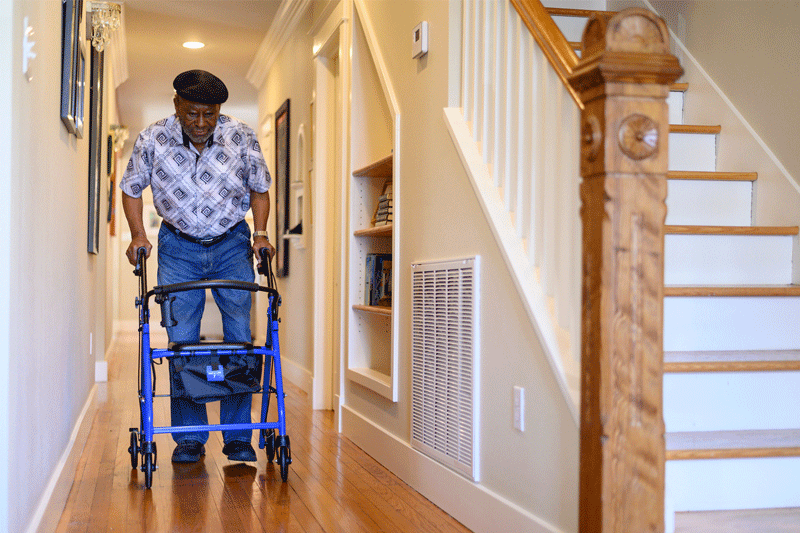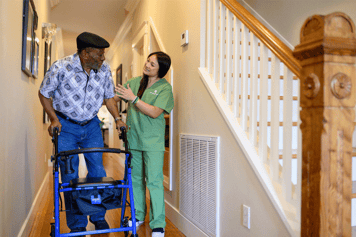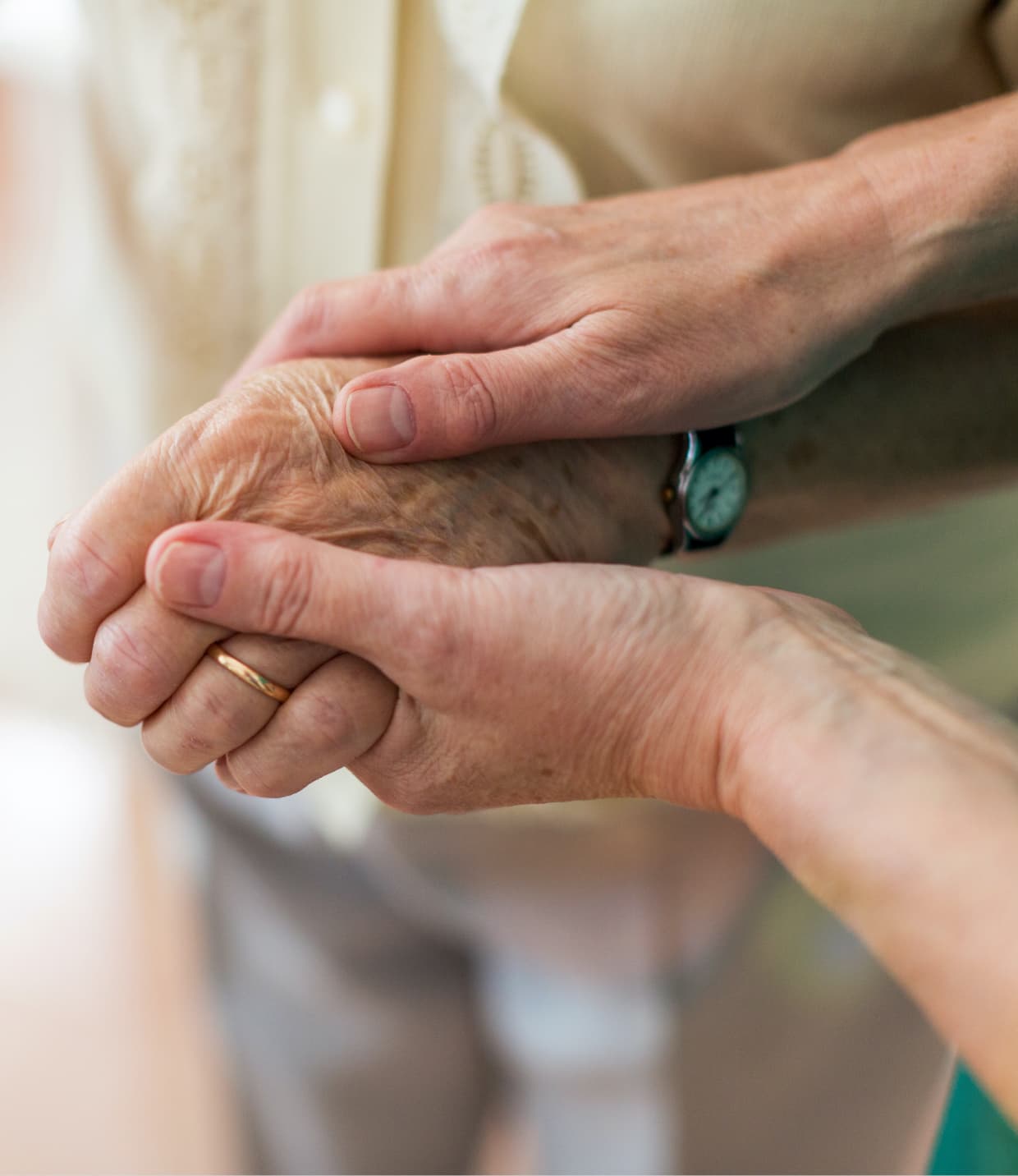When we hear the words “fall prevention,” most of us think we don’t need it – at least not yet. You might think: When I have trouble walking, that’s when I’ll start taking fall precautions.
The truth is, it’s never too early to work on fall prevention. Falls happen in an instant, when we least expect them. After all, if we knew when we were going to fall, we would stop it, right? That is exactly what a fall prevention program is designed to do: show you areas where falls are likely to happen, identify your risk factors and teach you fall precautions to minimize your risk.
So, what can you do to reduce your risk of falling? Here are a few fall precautions you can start taking now.
1. Understand Your Risk
Even if you’re healthy and active, you still can be at risk of falling. For example, a colleague’s family member, who is in her early 70s, very active, still driving and living independently, fell last year in a grocery store. Her foot got tangled in a plastic bag. When she fell, she broke her patella (kneecap). She worked hard in physical therapy and bounced back to her old self.
Months later, after returning from the grocery store one day, she had that debate we all do: Can I carry all these bags in one load rather than making an extra trip? Deciding she could make it in one trip, she loaded up both arms and walked up the sloped sidewalk to the house. What she did not anticipate is the sidewalk was slick. Halfway up, she took one wrong step and fell backwards, hitting her head hard against the pavement. This one wrong step changed her life. She is unable to do everyday activities for herself now and cannot live at home.
This is a heartbreaking story, but unfortunately it is not uncommon. According to the Centers for Disease Control and Prevention, 3 million older adults are treated in the emergency room for a fall each year. And every 20 minutes an older adult dies from a fall. Knowing the risk will help you take steps to avoid becoming a fall statistic.
2. Don't Buy into Common Myths About Falls
There are several misconceptions about falls. Learning the facts will help you determine what your fall risk factors may be.
Myth: If I don’t land on the ground, it is not a fall.
Fact: A fall includes landing on any lower level, not just the ground. If you try to get out of your chair, lose balance and fall back into the chair, that can be considered a fall. If you fall and catch yourself by grabbing furniture or leaning on a wall, it may be a fall. Even if you don’t get injured, any type of fall is a sign that you may need to take more fall precautions.
Myth: Falls are a normal part of aging.
Fact: Falls occur as a result of many factors but are not a normal part of aging. With appropriate fall precautions, you can work toward a life free from falls.
Myth: If I move less, I won’t fall.
Fact: Limiting activity is more likely to increase your fall risk. Staying active will improve your strength, balance and ability to move around safely. It will also improve your state of mind and overall health.
Myth: If I stay home, I can avoid falling.
Fact: Most falls among older adults occur at home, while you’re doing everyday activities like taking a shower or cooking a meal. By taking fall precautions, you can make your home a safer place.
3. Talk to Your Healthcare Provider
Your doctor can do a fall risk assessment and suggest a variety of fall precautions. Ask them to:
- Review your medications to see if you’re taking something that makes you dizzy or sleepy
- Check for vision or hearing problems, medical conditions and other issues that make you more likely to fall
- Determine whether an assistive device, such as a walker or cane, might help you get around easier
- Recommend an exercise program to build your strength, balance and flexibility at a pace that is comfortable for you
4. Make Your Home Safer
An occupational therapist can help you take fall precautions that make your home a safer place. For example, they may recommend adding grab bars in the bathroom, changing the lighting in your home, or moving rugs or other tripping hazards.
5. Ask Loved Ones for Support
Your friends and family may be able to help identify fall risks in your home and work with your doctor to get the support you need to stay safe at home. The more eyes in your home, the better.
All it takes is one wrong step to fall. But you can decrease your risk of falling with one right step. Take a step in the right direction today. Talk to your doctor about fall prevention or call an Amedisys care center near you.
Staci McGuire, DPT, MBA, serves as the Home Health Director of Clinical Strategy, Programs and Therapy Practice at Amedisys. With over 16 years of experience in various clinical roles within the organization, she is dedicated to empowering clinicians to provide exceptional care and achieve optimal patient outcomes by adhering to current best practices and standards of care.





